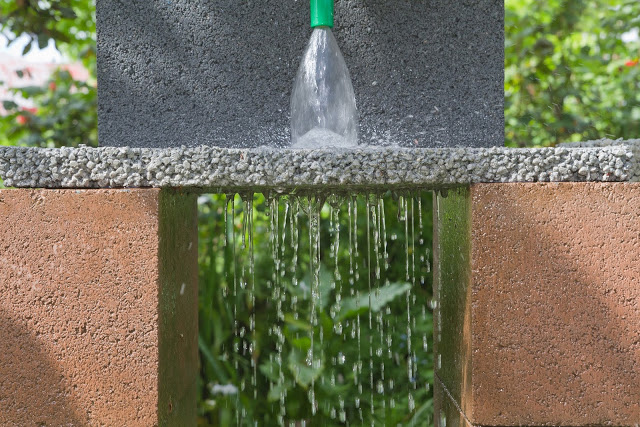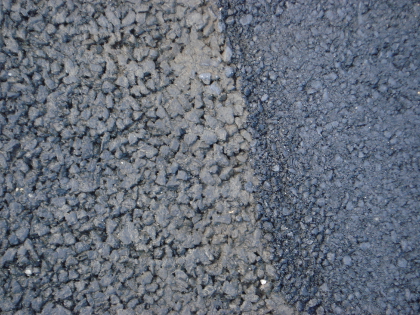Permeable pavements
Contents |
[edit] Introduction
A pavement with base and sub-base that allows the water to infiltrate or pass through the surface is known as Permeable Pavement. It not only helps to reduce the surface run off but also effectively traps the pollutants and solid particles in the water avoiding ground water pollution.
Evaporation of water at or below the surface also produces surface cooling, as opposed to the traditional heating of paved areas. This is especially beneficial in cities which experience extremely high temperatures in summer – traditional “blacktop” temperatures can make some public spaces unusable in warmer weather.
Generally, permeable pavement structures consists of a pervious / permeable surface course which may be of Asphalt concrete or Portland cement concrete laid over a layer of fine aggregates, which acts as a filter layer for infiltrating storm or rain water. Underneath this filter layer is a uniformly-graded gravel course to store water, which ultimately penetrates into the ground. General design practice requires an un-compacted natural ground, which allows relatively easier discharge of water avoids any standing water under the pavement structure that may cause structural failure.
Permeable pavements are generally recommended for residential, commercial and urban areas but not highways, motorways and streets with heavy traffic loading as these pavements are not designed with structural capacities to support such loads.
[edit] Advantages
Permeable pavements offer many benefits, both aesthetic and practical. Some of the benefits are listed below:
- Reduces storm water runoff, total water volume, and flow rate.
- Treats water runoff.
- Increases groundwater infiltration and recharge.
- Provides local flood control.
- Improves the quality of local surface waterways.
- Reduces soil erosion.
- Reduces the need for traditional storm water infrastructure, which may reduce overall project costs.
- Increases traction when wet.
- Reduces splash-up in trafficked areas.
- Extends the life of paved areas in cold climates as there is less cracking and buckling from the freeze-thaw cycle.
- Reduces the need for salt and sand use during the winter, as there is little or no black ice.
- Requires less snow-plowing.
- Reduces groundwater pollution.
- Offers evaporative cooling.
[edit] Disadvantages
Some of the disadvantages associated with these pavements are:
- Highly contaminated runoff can be generated by some land uses where pollutant concentrations exceed those typically found in storm water.
- Heavy traffic loads can lead to pavement failure.
- In cold climates, salts used for the removal of snow, contains chlorides that could migrate through the porous pavement into groundwater.
- Frequent maintenance is required to prevent the blockage of pores.
- Additional maintenance cost compared to conventional pavement.
[edit] Related articles on Designing Buildings Wiki:
IHBC NewsBlog
Old Sarum fire in listed (& disputed) WW1 Hangar - Wiltshire Council has sought legal advice after fire engulfed a listed First World War hangar that was embroiled in a lengthy planning dispute.
UK Antarctic Heritage Trust launches ‘Virtual Visit’ website area
The Trust calls on people to 'Immerse yourself in our heritage – Making Antarctica Accessible'
Southend Council pledge to force Kursaal owners to maintain building
The Council has pledged to use ‘every tool in the toolbox’ if urgent repairs are not carried out.
HE’s Research Magazine publishes a major study of the heritage of England’s suburbs
The article traces the long evolution of an internal programme to research 200 years of suburban growth
IHBC Context 183 Wellbeing and Heritage published
The issue explores issues at the intersection of heritage and wellbeing.
SAVE celebrates 50 years of campaigning 1975-2025
SAVE Britain’s Heritage has announced events across the country to celebrate bringing new life to remarkable buildings.
IHBC Annual School 2025 - Shrewsbury 12-14 June
Themed Heritage in Context – Value: Plan: Change, join in-person or online.
200th Anniversary Celebration of the Modern Railway Planned
The Stockton & Darlington Railway opened on September 27, 1825.
Competence Framework Launched for Sustainability in the Built Environment
The Construction Industry Council (CIC) and the Edge have jointly published the framework.
Historic England Launches Wellbeing Strategy for Heritage
Whether through visiting, volunteering, learning or creative practice, engaging with heritage can strengthen confidence, resilience, hope and social connections.















